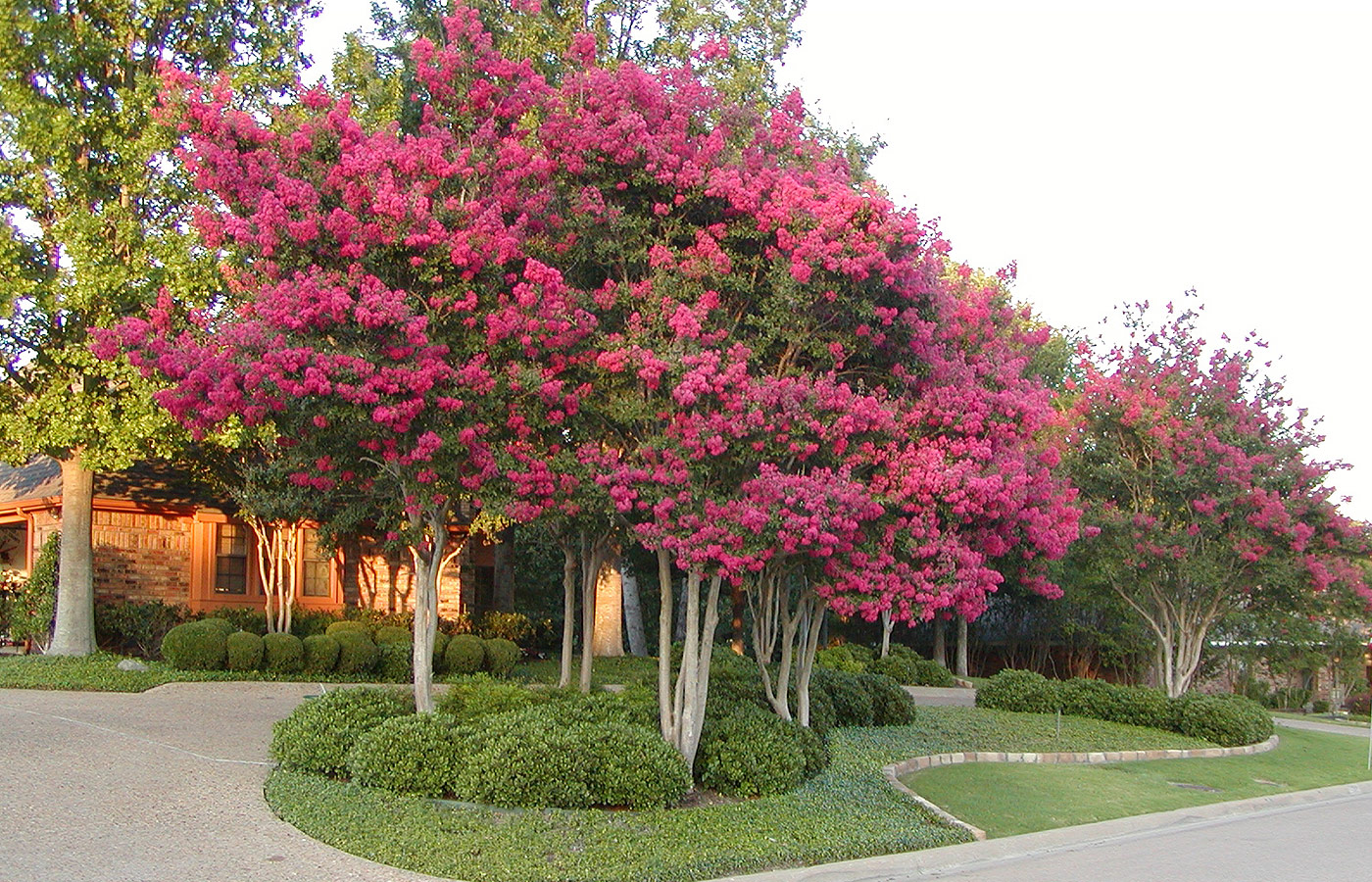
Crape Myrtle Pruning
Crape myrtles are often chosen as a landscape plant for their long, summer blooming period. Also making crape myrtle a popular landscape choice is the fact that the plant is as tough as it is beautiful. Their peeling bark, fall color, and the grace of their natural form are other prized characteristics.
EXCESSIVE PRUNING
The practice of chopping off the tops of crape myrtles, known as ‘topping’ is, unfortunately, very commonplace. Topping has been aptly named ‘Crape Murder’ by gardeners due to the murderous affect to the plants appearance resulting from the severe nature of the pruning.
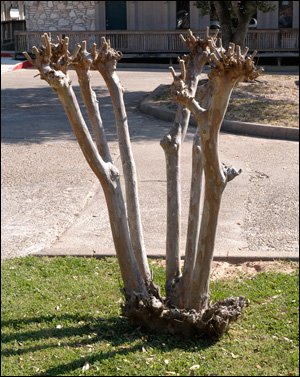
Many believe ‘topping’ is required to promote flowering; some prune because the plant is too large for the space provided; while others see their neighbors doing it and feel they need to do it as well. There are instances in which heavy pruning is necessary, but typically, only light, if any, pruning is needed.
IMPROVING THE SHAPE & STRUCTURE
Crape myrtle prefers hot, sunny climates and in Texas can grow to tree-size proportions. It is important tree types are sited where they have a large area to spread. When given an ideal location, these tree types should be allowed to develop their natural style without whacking off their tops.
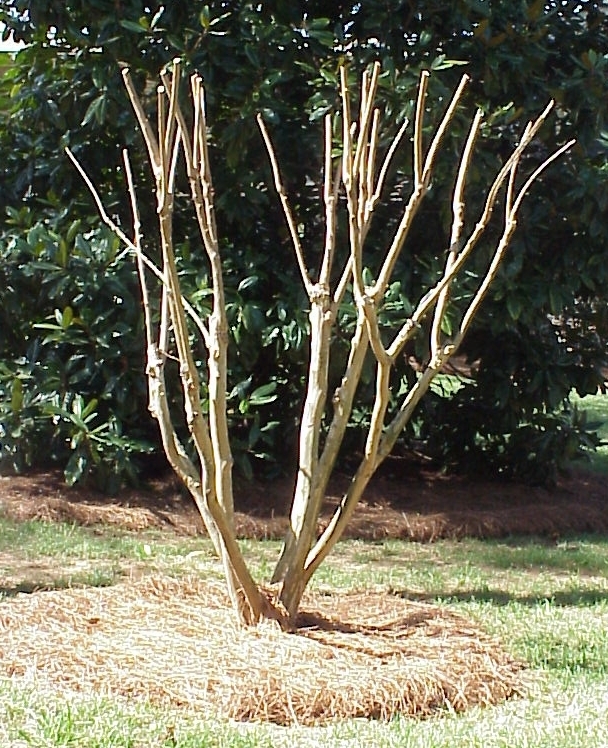
To develop a tree shape, remove all but three to five of the strongest trunks at ground level. As these trunks mature, remove lower, lateral branches (aka ‘limbing-up’) to one-third or halfway up the height of the plant. Remove branches that are crossing or rubbing against each other as well as shoots growing into the center of the canopy. Make cuts to a side branch or close to the trunk. Head back wayward and unbranched limbs. As the tree grows taller, remove lower branches as needed. Remove any future growth from the ground to retain the desired tree shape. This basal sprouting may occur whether the tree has been pruned or not. When possible, pull these sprouts out while still succulent, instead of pruning them maintain a smoother, cleaner trunk base.
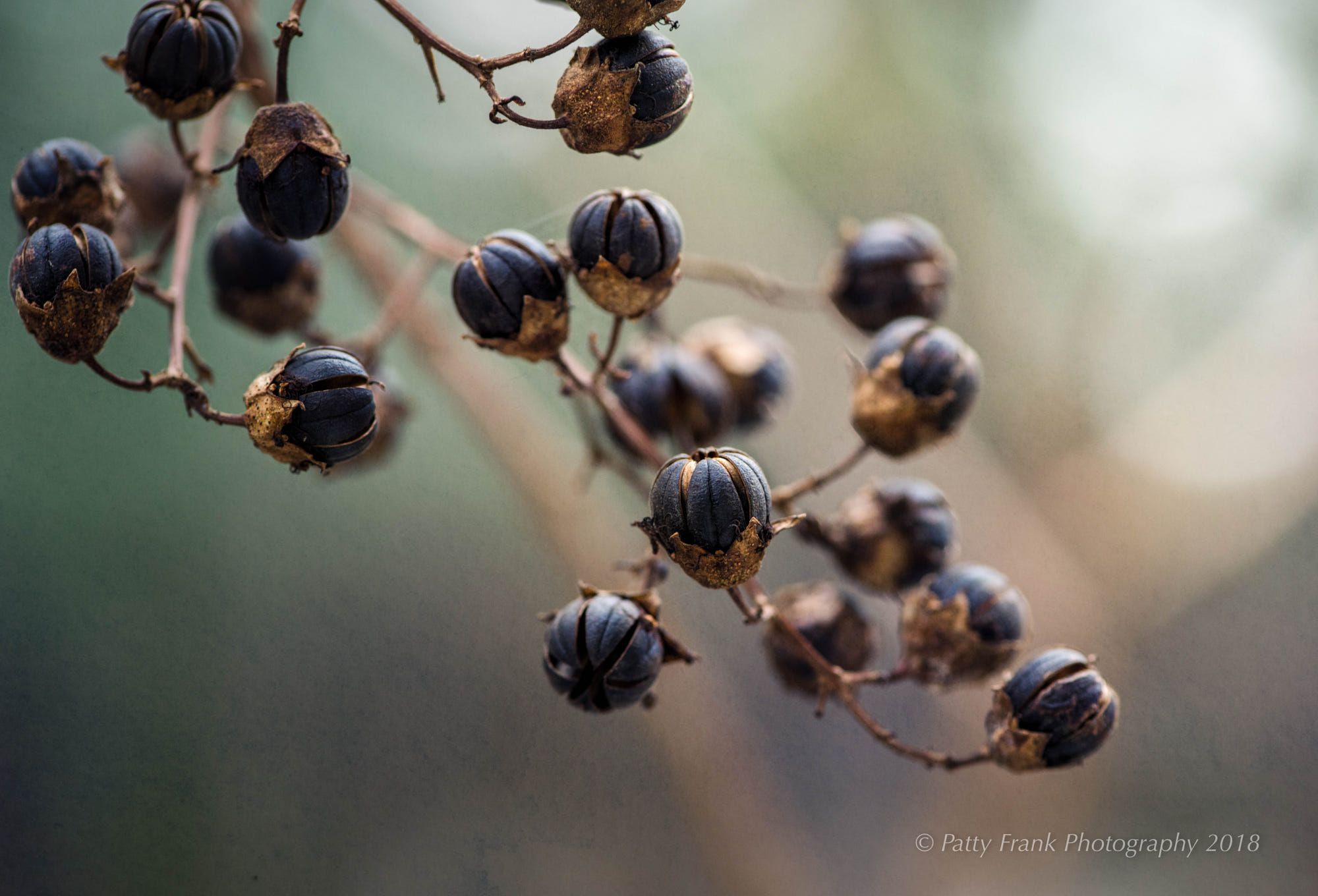
SEED HEADS
The plant’s appearance can further be improved by removing the seed heads in late winter or early spring before growth begins. This is recommended only if they are within reach. Once it becomes a tall, mature plant, allow nature to take its course – the seed heads will drop, the plant will bloom, and the natural grace of the plant will be retained.
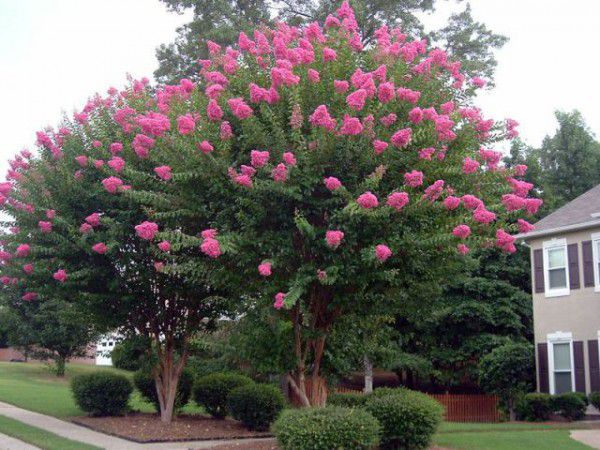
FLOWERING
Flowers on crape myrtle are produced on new growth. Although it will produce larger flowers and bloom more profusely if lightly pruned, crape myrtle will produce plenty of flowers without any pruning. If pruning is necessary to stimulate new growth, prune in late winter or early spring. On smaller plants, encourage a second bloom in summer by pruning flowers immediately after they fade.
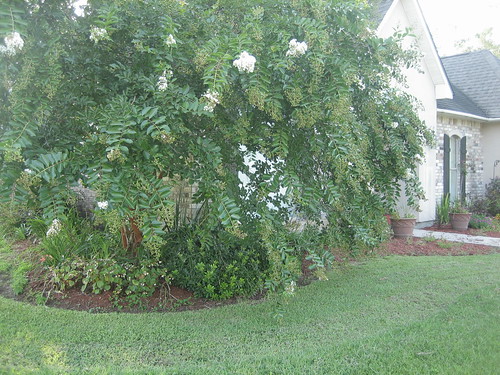
OVERGROWN PLANTS
When confronted with a large, old crape myrtle that has overgrown its space, consider all options prior to settling on top pruning. If lower limbs are interfering with people or cars, limb up lower limbs to create clearance under the canopy. If lower limbs obstruct windows or doors, prune limbs up to above the roofline of single story homes. If a tree is too close to a building, eliminate one of the major trunks to create space. Only as a last resort should a beautiful, old specimen be topped to squeeze it into a confined space.
To keep a crape myrtle at a manageable height, prune moderately by removing all twiggy growth back to lower growing side branches. This will give the plant a more uniform appearance. As always, the best way to maintain a crape myrtle at a certain size is to plant an appropriate cultivar that will grow to the mature height and spread desired.
When a large crape myrtle is in a spot where a low, compact plant is desired, there are two options: (1) dig up the offending specimen and then plant a dwarf or smaller cultivar that requires little to no maintenance, or (2) prune the stems back to about six inches above the ground each year. Severe pruning will not kill or injure a healthy crape myrtle.
Corrective pruning should be done to remove damaged or dead branches when a problem is detected. Otherwise, prune while the plant is dormant (winter or early spring) to remove lateral branches, small twigs, or branches in the center of the plant to open more space for sun and air movement.
Source: https://hgic.clemson.edu/factsheet/crape-myrtle-pruning/









